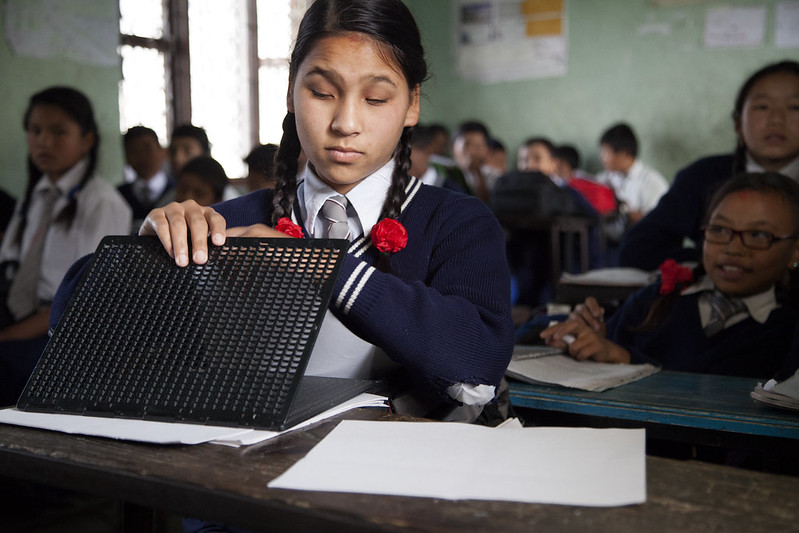
What is the difference between equality, equity, and reality? These are the three words that define the education system in Nepal. If you are rich, then you see equality all around you. If some organisation supports you, there is the concept of equity. And if you are poor and have no access to education, the journey of reality begins.
This reality for disabled people, or as some prefer to term them in today’s civilised world, differently abled is different. While the latter term is more widely accepted, in a developing country like Nepal, merely changing the term does not alter the situation or the infrastructure around us, which remains inaccessible and fails to comply with the Universal Design Concept advocated globally. One might wonder why accessibility is intertwined with education. It is the main question we are not asking ourselves.
Challenges to gain education
The government has made various promises regarding free education in government schools. However, envisioning gaining education for people with disabilities in private institutions presents a new form of challenge for both children and their parents. Many schools or colleges refuse to accept applications simply because the individual has some form of disability.
The main argument put forward by schools is that they lack the necessary support systems to create a suitable environment for people with disabilities. If a child with a disability is admitted, they often face severe mental trauma.
In many cases, teachers or upper management are the first to display biases, as the child is admitted against the school’s will. Moreover, students absorb these biases from their teachers, leading to peer pressure and adjustment issues that are more painful than those faced by children without disabilities. Consider a girl in a wheelchair eating her lunch alone, surrounded by empty benches in the classroom; the mere thought is agonising. If faced with such a situation, how would you cope?
For a 17-year-old boy who desires the high school experience after completing grade 10, homeschooling with the aid of a personal tutor becomes the only option due to the lack of laws compelling schools and colleges to make their infrastructure accessible. Access to education is a fundamental right of every citizen, yet the reality for many individuals with disabilities in Nepal remains deeply unjust.
Overlooked by government
If our Constitutional Assembly and government offices are not disabled-friendly, expecting simple private or government colleges to be accessible is often overly optimistic, although not impossible. Members of parliament should prioritise this matter and propose a bill regarding accessible infrastructure, particularly for educational institutions, as a starting point.
However, people with disabilities constitute a minority, so this issue may be overlooked like many others in a democracy where the rule of the majority holds the most power or authority.
Imagine a situation where a school decides not to teach any children with disabilities, forcing them to shift to another school. Ironically, the school that made this decision has accessible infrastructure supported by an organisation.
This is morally and legally wrong. While many may blame the school for its decision, the root of the problem lies within our society and nation. Such occurrences highlight the lack of proper rules and regulations and the absence of accountability among various stakeholders.
Many organisations are actively working in the field of disabilities, and some are making significant strides. However, it’s disheartening to find that despite advocating for disability rights, some of these organisations have inaccessible infrastructure.
It’s crucial to recognise that true change makers should lead by example, ensuring their own spaces are accessible. Failing to do so raises doubts about their commitment to bettering the lives of people with disabilities.
We must acknowledge the practical limitations faced by many educational institutions. Not every institute has the resources to make its entire infrastructure fully accessible. However, the journey towards accessibility can begin with small steps, such as making one classroom and a toilet accessible.
This incremental approach is far more meaningful than the lofty speeches often heard in awareness programs conducted by government entities and various international and non-governmental organisations. Taking tangible actions, even on a small scale, can create a more inclusive environment for people with disabilities.





















